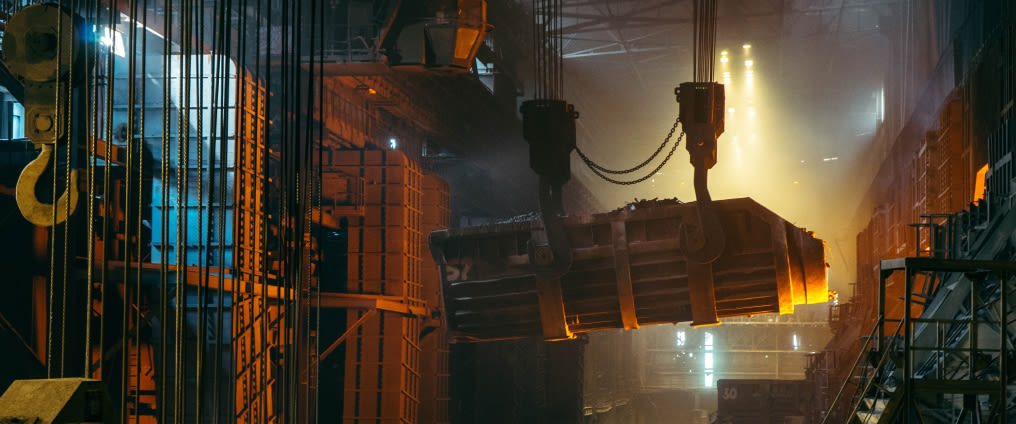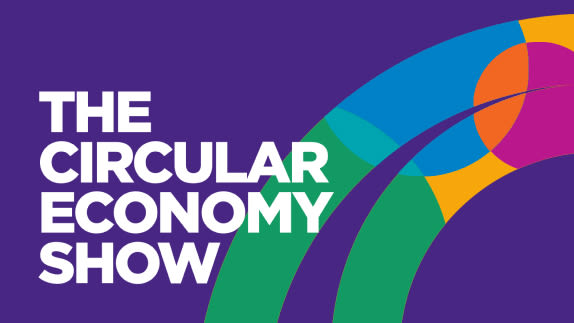How industries transform waste into resources
Businesses have been making huge losses by failing to capture the value of industrial waste, but applying circular economycircular economyA systems solution framework that tackles global challenges like climate change, biodiversity loss, waste, and pollution. It is based on three principles, driven by design: eliminate waste and pollution, circulate products and materials (at their highest value), and regenerate nature. strategies, enabled by new technologies, could create cost-saving opportunities as well as profitable new revenue streams.
The waste generated by residential buildings may seem enormous, but the waste produced by factories is an awful lot more. In Europe, factories produce 46 million tonnes more waste than households every year. Yet, surprisingly, unlike households, they are not as incentivised to reduce and retrieve waste. European Union waste legislation, for instance, contains targets that focus mostly on household waste whilst industrial waste landfilling is still often cheaper than incineration or recycling. In France, for example, the average cost of recycling, excluding taxes, is EUR 144 per tonne compared to EUR 105 for incineration and EUR 68 for landfilling.
Many companies believe their industrial waste management is under control because they have contracted with a waste management company or, perhaps, they have carried out lean manufacturing processes to improve efficiency. But in most cases, businesses fail to retrieve waste in great volume. Even if they efficiently manage standard waste flows, like plastics or cardboard, they overlook others, such as wastewater, spent chemicals, or used equipment. The materials these companies see as waste often contain value that can be recaptured. For instance, most breweries sell spent grains as low-value animal feed while these grains contain high-value components, such as proteins, polysaccharides, and fibres that could be reused as nutritional and pharmacological ingredients. In addition, factories claiming to achieve zero waste to landfill often incinerate most of their waste.
Overlooking industrial waste comes at a cost. In the UK, the actual cost of waste for companies is typically 4% to 5% of turnover and can be as high as 10%. The true cost of waste is not simply the cost of discarded materials, it encompasses inefficient use of raw materials, unnecessary use of energy and water, faulty products, disposal of by-products, waste treatment and wasted labour. Cost of waste is not only high — it is increasing, especially in Europe. In Austria, the landfill tax for industrial waste increased from EUR 3 to 87 per tonne between 1996 and 2014. In France, the General Tax on Polluting Activities is expected to increase from EUR 32 to 65 per tonne for landfill by 2025. In the United Kingdom, the landfill tax has already reached EUR 101 per tonne. For environmental and economic reasons, businesses cannot overlook industrial waste anymore. They need to implement circular economy strategies in order to design out waste and keep materials in use.
Avoiding waste
Factories should first design out waste, either by adopting new production processes or improving existing ones. For example, by replacing die cutting with cutting technologies that use lasers, Nike intends to minimise the gap between cut parts and, at the end, reduce factory waste by more than 1,000 tonnes annually. Michelin, in 12 years, has succeeded in reducing the quantity of waste generated during the manufacture of tyres by around 27%. Gap, in partnership with Spanish denim mill Tejidos Royo, is implementing a denim dyeing technique that can reduce water and chemical consumption by up to 99% and 89% respectively when compared to the traditional process.
Factories can also switch from buying materials to buying services. For example, automotive, aerospace, and microelectronic industries often purchase chemical management services. These services can encompass all aspects of the chemical management lifecycle, from procurement to end of life management — reducing costs, risks and environmental impacts. The providers of such services, including PPG, Henkel or Quaker Chemicals, are compensated based on the quality and quantity of services provided — not on the volume of chemical sold. This model reduces not only waste, but also chemical use and emissions. In addition, it provides a substantial cost saving — a total average cost reduction of 30% is usually achieved in the first five years.
Turning waste into resources
When waste cannot be avoided, it can often be seen as valuable resources that can be reused in other industrial processes. For example, Denso, an automotive equipment supplier, produces 15 tonnes per year of potassium aluminium fluoride, a hazardous waste. By supplying this waste as a raw material to Mil-Ver Metals, which uses it to produce aluminium alloy ingots, Denso avoids paying GBP 30,000 per year to dispose of it.
Agroindustry, especially, has a major and often under-valued opportunity to convert industrial organic waste into high value speciality products. In Germany, Danone transforms whey, a by-product of cheese production, into lactose for pharmaceutical use. In Manchester, Kellogg’s cereal factory has partnered with UK brewery Seven Bro7hers that uses the corn flakes that do not pass quality control to make beer.
Until recently, matching waste supply with resource demand was often challenging and costly. But new digital platforms, leveraging open data, big data and machine learning technologies, make matching much easier.
Recycling waste
Finally, if it cannot be reused, industrial waste can often be recycled, either on-site, if volumes are sufficient, or off-site. In Ijmuiden, the Netherlands, a Tata Steel plant uses two large on-site hydrochloric acid recovery plants that turn waste hydrochloric acid pickle liquor into ready-to-reusereuseThe repeated use of a product or component for its intended purpose without significant modification. hydrochloric acid and ferric-oxide. To supply LafargeHolcim cement plants around the world, Geocycle collects waste to recyclerecycleTransform a product or component into its basic materials or substances and reprocessing them into new materials. mineral content. These materials are used in substitution to virgin materialsvirgin materialsMaterials that have not yet been used in the economy. such as limestone, clay or iron, for clinker production.
By using new technologies and processes, a growing amount of industrial waste is being recycled. For example, today, significant quantities of bearing waste are generated by the aerospace, automotive, circuit board and metal finishing sectors, without recovery of valuable materials from the waste streams. But by combining technologies, electro-coagulation, material digestion and electrowinning, a European project has developed a recycling system that can recover metal from primarily waste sludge, which could help to boost the recycling rate of these sectors. In Italy, Italtecno has designed a technology to recover spent caustic soda used in dies pickling processes for the aluminium extrusion industry.
Water is a scarce resource and 19% of withdrawals globally come from industry. Yet still most industries barely recycle or reuse it. However, efficient filtration technologies, such as nanofiltration or reverse osmosis, can convert wastewater into clean water, chemicals and energy. Water recycling not only reduces water demand and wastewater discharge, but it also enables the recovery of valuable materials. A project funded by the European Union, AFTERLIFE, is developing innovative technologies that will filter and extract valuable elements from wastewater and convert them into bioplastics and food additives, as well as purifying the water. A L’Oréal plant in Settimo, Italy, has been treating its wastewater by evapo-concentration. This process involves heating the effluents so as to recover both the water, which can then be treated and recycled, and the concentrates. It uses the heat source already available from the compressors and, as a result, doesn’t require any additional energy.
Getting started
In order for businesses to move to a system where they capture the value in their industrial waste, they should first assess the total cost and potential value of their waste. In a recent survey, 90% of responding French companies didn’t know the total cost of their waste management.
As a second step, companies should set up a dedicated team in charge of identifying strategies to better capture the value of their industrial waste. The team could gather people from various functions: purchasing and waste management, but also R&D and sales. In Brazil, SC Johnson set up a dedicated “Green Team” that examined the production chain, streamlined packaging and identified materials that could be reused or recycled in environmentally responsible ways.
In a third step, businesses should roll out initiatives across sites and waste flows. P&G has formed the Global Asset Recovery Purchases (GARP) team, which is in charge of helping industrial sites to find new uses for their waste. For example, the program allowed diaper production waste to be reused into dog hygienic mats. Hair care, detergent and toothpaste waste was used in the production of car cleaning products. Since the program started in 2008, the GARP helped save P&G more than USD 2 billion and helped divert 4.5 million tonnes of waste from landfill.
Industrial companies have been very good at continuously improving their productivity, but they are still underperforming at managing waste. Individuals are getting better at reducing, reusing and recycling their waste — so should factories.





